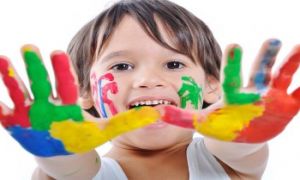The early years are a time of dizzying changes which affect not just the physical growth of the child but also their emotions, communication, sense of self and relationships with the surrounding world. Research has found music, especially through attributes like rhythm and movement can be a great aid in helping children control their reactions, emotions and behaviour. The following article provides information on What Is Self - Regulation, the Links Between Self Regulation and Executive Function, How Music Helps Children Nurture Self Regulation and more.
What Is Self-Regulation?
Self-regulation refers to managing emotional, cognitive and behavioural processes that are conducive to positive adjustment and social relationships. While this used to be typically thought of as a skill for adults, increasingly there is evidence1 to show that the ability to identify and manage one’s emotions in early childhood prevents widening gaps in learning and achievement when children begin school, particularly for vulnerable children. As they are exposed to multiple sources of sensory information that compete for their attention in complex classroom environments, some children struggle to maintain attention, remain emotionally distressed after negative experiences, or display impulsive behaviours that are likely to bring them into conflict with teachers and peers. Thus it is crucial that children are able to build foundational skills for self-regulation and early childhood teachers have a central role in helping young children to regulate their emotions, thinking and behaviour which are the bases of self-regulation.
Links Between Self-Regulation and Executive Functioning
Self-regulation, in early childhood at least, is not a matter of will or willingness on the part of children to control their emotions and behaviour. It is really an umbrella term that refers to a range of processes related to the regulation of attention, behaviour, and emotions. These processes are functionally related to other areas of the brain that coordinate thinking and behavioural processes. These coordinating and higher-order skills are called executive functions and include attention shifting, working memory, and inhibitory control. Children with low self-regulatory abilities show marked neurological difficulties associated with executive functioning which usually go on to underpin later learning and achievement gaps in school. However, if addressed prior to school then vulnerability for poorer school and social outcomes is reduced.
How Music Can Help
One known way to reduce such neurological difficulties is through formal music training and informal music experiences. The first confers what is known as the ‘musician advantage’ which encompasses non-musical cognitive benefits associated with formal music training. Researchers2 have shown that musicians consistently show enhanced skills in areas such as language, cognition, and motor control, along with better neural plasticity and structural brain development, when compared to non-musicians.
However, while formal music education for all young children would be ideal, this is not likely to be feasible, or even necessary to accrue the benefits in self-regulation desired. Researchers like Kate Williams, QUT Associate Professor and an early childhood researcher in brain development and self-regulation, have shown that coordinated rhythmic movement activities in preschool could be an effective and appropriate approach through which to address the neurological bases of self-regulation in early childhood3.
In What Ways Can Music Help?
At the core of this approach is sensorimotor or beat synchronization which refers to the coordination of rhythmic movement with an external rhythm. The external rhythm could be part of a piece of music with other musical elements or provided as a simple tap or clap. Prof Williams’ research paper discusses the neurological link between beat synchronization and self-regulation skills in children, thereby arriving at two major implications:
- First, children’s ability to adapt to and synchronize to a given beat may provide a window to developing neurological processes that underpin self-regulation. Anecdotally, teachers report that children who struggle to find the beat in group music times are often the same children who also have trouble maintaining attention in other tasks of the program.
- Second, practising and developing beat synchronization through regular rhythmic movement could simultaneously support self-regulatory development, stimulating aspects of the ‘musician advantage’ effect.
The other approach that holds promise in supporting early self-regulatory development is one that embeds music and movement experiences, in both formal and informal ways. Studies have found that musical play through handclapping, circle games, movement and instrumental play, offer opportunities for self-regulatory behaviours to emerge including cognitive control, monitoring and planning, with instrumental play offering the most opportunity. Importantly, in relation to emotional regulation, children who do not typically demonstrate high levels of emotional regulation in general classroom activities are able to demonstrate this during structured group musical play with peers. Such findings suggest that the motivating aspect of group music engagement may be the factor that stimulates better self-regulatory behaviour.
One way to explain the impact of movement on self-regulation could be from the field of exercise physiology according to which physical activities that embed cognitive challenge and social interaction are likely to support executive function development too. According to Prof Williams, supporting the such coordinated movement with rhythm may further enhance these positive effects by stimulating the same shared neural networks for auditory perception, motor coordination, and self-regulatory functioning that are enhanced in trained musicians, thus bringing the ‘musician advantage’ to a wider group of children.
How To Use Music To Nurture Self-Regulation
Based on the above research, early childhood educators can thus explore several ways of using music to foster self-regulation in their classrooms. Here are some ideas:
- Fingerplays - Sing your favourite songs and create fingerplays to go along with them. Fingerplays can provide children something to do with their hands, especially during transitions that require waiting, like standing in a handwashing line, riding the bus or waiting for food at the table.
- Action songs and rhymes - songs like Incy Wincy Spider; Row, row, row your boat and Galumph help children move their bodies in different ways. Also, their strong beats lend a sense of structure and predictability to the musical experience. This helps children anticipate what is coming next, thereby helping them to feel effective and successful and thus supporting self-regulation development.
- Dance to music - Dancing gives children an opportunity to practice self-control by helping them gain awareness of their own bodies and others. You can put on some peppy music and encourage children to a lively dance. Games like ‘freeze dance’ can particularly help children to practice self-control; in this, the music is stopped at a random point and all players must freeze immediately and hold that position until the music begins again. If a player does not freeze immediately, they may be given a mild penalty, like doing ten jumping jacks during the start of the next round and then rejoining the dance.
- Yet another way dancing can help is by allowing children a physical release from overwhelming emotions. When kids are feeling angry, frustrated, or just plain restless, dancing can help them express their emotions in a safe and fun way. Find songs appropriate for different types of strong emotions and let children dance to the music until they feel calmer.
- Add props – Make dances even more colourful by using props and costumes. Encourage children to look through their cubby holes or dress-up trunk for inspiration – if a child comes across a flowy scarf, ask them to invent a dance move or have another keep time to the beat with a jangly bracelet.
- Vary the pace – Alternate lively music and movements with slower instrumental or world music to create a sense of calm and relaxation. Perhaps encourage children to sway like a tree or rock a stuffed animal to sleep. Try walking quietly or tiptoeing around the room while rocking so as not to wake the ‘baby’ and encourage children to do the same. Together, pretend to be asleep when music plays. “Wake up” and act out different animals when the music stops. Turn on the music and pretend to sleep once again. This is a great way to make children aware of self-soothing or self-calming strategies.
- Drumming – Create a beat by using a drum or even a pot with a wooden spoon works. Take turns drumming different beats while marching, tiptoeing, stomping or hopping around the classroom. You can even extend it into a freeze game, moving when the drummer plays and freezing when the drumming stops.
- Shakers – Explore other types of beats by getting children to make shakers with you. Small plastic bottles or jars with lids can be filled with different materials – gum nuts, leaves, twigs, buttons or gravel – and in varying amounts so that each produces a different sound. Not only will children love making sounds and moving around, but you can later extend it to a science learning opportunity too as you explore why the bottles make different sounds.
- Use the body – Show children how their own bodies and limbs can be used to make rhythm. Clapping hands, stomping feet, patting thighs and tapping shoulders are all examples of body percussion movements such as which can be done to the tune of songs like Heads, shoulders, knees and toes. Once children have got the hang of the basic movements, add variations like going forward and backwards, fast, then slow, stopping and starting. Eventually, play popular music like the title track of The Lion King and then encourage your children to clap to the beats on their own.
- Conducting – conducting music offers children a great opportunity to learn to identify pace and rhythm. Make it fun by using a wooden ladle as a conductor’s baton. As children sing the ABCs or a popular song, wave the baton back and forth for them to get the association between the singing and the baton’s movements. Then vary the speed by encouraging them to sing faster when the baton moves more quickly, slowing down with the baton and stopping when the baton stops. Later have children take turns conducting one another to their favourite music.
- Circle games – Children are already used to circle time in their setting, usually used for discussions and group activities. This can be used for collaborative musical play as well, with the goal of supporting self-regulation. For instance, have the children first sit in a circle. Then, while singing a song, tell them to pass around a tambourine with an egg shaker in it without making any noise. Such activity will require children to wait for their turn; they will not only be monitoring and controlling their own behaviour but are also likely to check or monitor what other children are doing. The group context especially contributes to children maintaining very high levels of motivation, all the while focusing on and resisting distractions for the sake of the game.
While using music, rhythm and movement to foster foundation self-development skills in children, it may help to keep in mind the following points:
- Do it together: When engaging in music play, Prof Williams encourages educators to move in time with the children. Known as interpersonal synchrony, this is believed to lead to greater helping behaviours, empathy and social cohesion.
- Give it time – Prof William also suggests that educators do not worry if a child appears to be out of time with the music. Though it is not possible to make someone find the beat, by providing the opportunity the brain can be allowed to look for the patterns and work things out on its own.
- Make it fun – again when using music, let the focus be on children having fun rather than driving home any point about children’s social and emotional learning. Keep experiences relaxed and most importantly, let children choose if they want to participate or not. A positive, playful environment is crucial for any benefit to accrue from the musical play, whether cognitive or emotional.
Further Reading
The Zones Of Regulation - The following article provides information on What Are The Zones Of Regulation, How To Use The Zones Of Regulation, Strategies and more.
Linking Social/Emotional Development To EYLF 0 - 5 Years - The following article provides the social-emotional developmental milestones of children from 0 to 5 years and how they link to the EYLF.
Teaching Children To Identify Their Anger Signs - The following article shares tips on teaching kids to identify their anger signs so that they know how to manage them better.
EYLF Learning Outcome 3: Children Have A Strong Sense Of Wellbeing - The following lists the sub outcomes, examples of evidence when children can achieve each sub outcome and how educators can promote and help children to achieve EYLF Learning Outcome 3: Children Have A Strong Sense Of Wellbeing.
Benefits Of Music and Movement - The following article provides suggested learning objectives that support a child's overall development in music.
How Music Enriches Brain Development In Children - The following article provides information on How Music Enriches Brain Development In Children, Playing Music Vs Listening To Music, the Benefits Of Music and more.
References:
- Blair, C., & Raver, C.C. (2015). School readiness and self-regulation: A developmental psychobiological approach. Annual Review of Psychology, 66, 711-731. doi:10.1146/annurev-psych-010814-015221
- George, E.M., & Coch, D. (2011). Music training and working memory: An ERP study. Neuropsychologia, 49(5), 1083-1094. doi:10.1016/j.neuropsychologia.2011.02.001
- Williams, Kate (2018) Moving to the beat: Using music, rhythm, and movement to enhance self-regulation in early childhood classrooms. International Journal of Early Childhood, 50(1), pp. 85-100.
- Zachariou, A., & Whitebread, D. (2015). Musical play and self-regulation: Does musical play allow for the emergence of self-regulatory behaviours? International Journal of Play, 4(2), 116–135. doi:10.1080/21594937.2015.1060572
- Best, J.R. (2010). Effects of physical activity on children’s executive function: Contributions of experimental research on aerobic exercise. Developmental Review, 30, 331-351. doi:10.1016/j.dr.2010.08.00




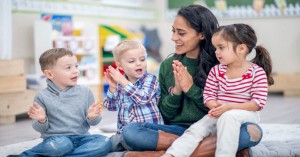


 As an Educator in Australia, your pay rate falls under the Children’s Services Award 2010. This award states the minimum amount that an employer can
As an Educator in Australia, your pay rate falls under the Children’s Services Award 2010. This award states the minimum amount that an employer can Writing a personal philosophy is a great way for others to read what your values and beliefs are in regard to early childhood education. The
Writing a personal philosophy is a great way for others to read what your values and beliefs are in regard to early childhood education. The When going for a job interview the most nerve-wracking part of it, is answering those questions that may be asked. The following article provides a
When going for a job interview the most nerve-wracking part of it, is answering those questions that may be asked. The following article provides a Sometimes you know that it’s time to move on from your current centre. You may have found another centre to work with, your circumstances may
Sometimes you know that it’s time to move on from your current centre. You may have found another centre to work with, your circumstances may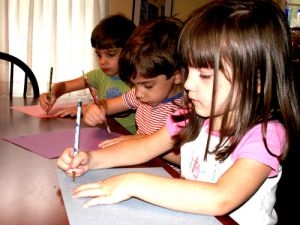 The “Preschool Room” is final step for you, as a childcare professional, to prepare your group of children and their families for school and making
The “Preschool Room” is final step for you, as a childcare professional, to prepare your group of children and their families for school and making Progressive mealtimes are giving an opportunity for children to choose when they want to eat within a certain timeframe instead of eating at a set
Progressive mealtimes are giving an opportunity for children to choose when they want to eat within a certain timeframe instead of eating at a set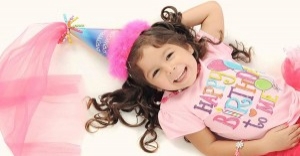 Celebrating children's birthdays is important to the child and their families. It's a special occasion that focuses on the individual child and celebrates the day
Celebrating children's birthdays is important to the child and their families. It's a special occasion that focuses on the individual child and celebrates the day When Parents are sending food from home, it's important that they understand they need to bring snacks and pack a lunch that is healthy and
When Parents are sending food from home, it's important that they understand they need to bring snacks and pack a lunch that is healthy and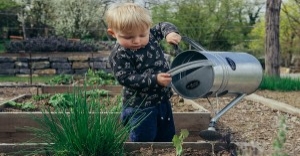 The NQS mandates services to take an active role in caring for the environment and contributing to a sustainable future. According to NQS Standard 3.3,
The NQS mandates services to take an active role in caring for the environment and contributing to a sustainable future. According to NQS Standard 3.3, One of the best ways to encourage children to grow a garden to develop a range of skills is to create an edible garden. An
One of the best ways to encourage children to grow a garden to develop a range of skills is to create an edible garden. An

